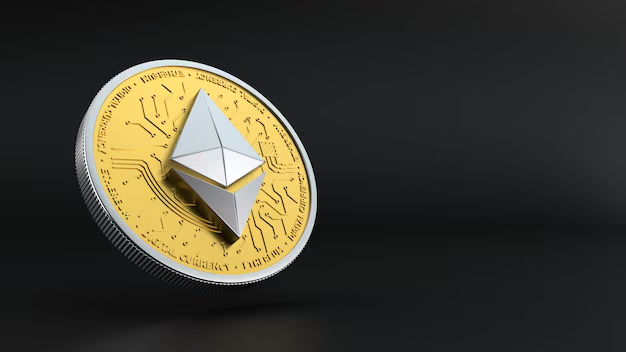Take Thursday. After a fresh flurry of bets emerged that Federal Reserve Chairman Jerome Powell will cut interest rates, the equity market got a jolt as stocks staged a risk-on rotation.
Small caps, value shares and short-seller targets duly surged in concert, with nearly 400 members of the S&P 500 posting gains. Yet the index itself fell on the day as tech behemoths which have driven the lion’s share of the 2024 market advance fell.
Such a broadening in the winners’ list has been sought for years by market skeptics lamenting an equity melt-up whose momentum has been generated by a tiny cohort of asset-light firms. But it’s a less obvious blessing in the short term for passively managed investors. They’ve stashed one in every four ETF dollars in just five funds — products that are now perilously exposed to the fate of the Magnificent 7.
Thanks to inflows and appreciation, the hegemony of those vehicles is at extreme levels. Assets in the iShares Core S&P 500 ETF (ticker IVV) recently crossed above the $500-billion threshold, marking the second time an exchange-traded fund has accumulated more than half a trillion dollars, data compiled by Bloomberg show. It follows in SPY’s footsteps, the $556 billion S&P 500-tracking behemoth, which made the crossover earlier this year.“The risk is that the megacaps correct,” said Matt Maley, chief market strategist at Miller Tabak + Co. “Everybody acknowledges that these big-cap names were the big reason why the S&P and Nasdaq rallied so strongly. Why wouldn’t you think if these same stocks go down that these indexes and ETFs wouldn’t also go down?” All told, five ETFs all of them tied to a greater or lesser extent to the cap-weighed S&P 500 or Nasdaq 100 each sit with $200 billion or more in assets, collectively commanding about a quarter of the $9-trillion US ETF universe. On Thursday, all five managed to fall even as the vast majority of US equities moved higher.
Of course, a future in which a larger swath of the market goes up is far from the worst outcome for investors, who are sitting on big gains after the crushing bear market of 2022. Shares bounced back from the midweek drama on Friday as tech megacaps found their footing. Still, the degree to which cap-weighted indexes rely on their biggest members was put in a stark light by Thursday’s rotation.
In fact, it was the worst session for the S&P 500 in nearly four years against an equal-weighted measure of the same collection of companies, one that gives Target Corp. as much clout as Microsoft Corp. While still up 0.9% for the week, the S&P 500 had its worst relative performance versus the equal-weight gauge since November 2020.
Everything that hadn’t been working before the start of the rotation was suddenly hot again. The Russell 2000, buoyed by big upward moves in the likes of Groupon Inc. and Archer Aviation Inc., had its best weekly showing since November 2023, up 6%. Meanwhile, a basket of most-shorted stocks had its best day on Thursday since May, with a 4% gain.
“At the end of the day, bad breadth just comes down to math,” said Amy Wu Silverman, head of derivatives strategy at RBC Capital Markets LLC. “If the mega-cap tech stocks are driving index contribution-to-return on the way up, then on the way down tech goes and the market goes.”
 Bloomberg
BloombergThere’s no shortage of superlatives to highlight the discrepancy between the big and small this year. A record-low percentage of stocks is outperforming the S&P 500, according to Torsten Slok at Apollo, who also points out that the top 10 companies now make up about 35% of the index but only 23% of earnings.
Meanwhile, Apple Inc., Nvidia Corp. and Microsoft are each greater than 7% of the S&P’s weight, according to Todd Sohn, an ETF strategist at Strategas.
Warnings about market concentration haven’t stopped investors from plowing ever-more money toward the megacaps. The Roundhill Magnificent Seven ETF (MAGS) — which holds Tesla Inc., Apple, Meta Platforms Inc., Nvidia, Alphabet Inc., Amazon.com Inc. and Microsoft — has seen inflows of over $285 million in the last two weeks, with an accompanying spike in trading volume, which is running 300% above the 30-day average, according to the issuer. On Thursday alone, traders exchanged $120 million worth of shares, the highest in the fund’s history.
“While leadership rotation can take some time, when it finally happens, it can be really painful because investors become one-sided into the peak of the concentration,” Cameron Dawson, chief investment officer of Newedge Wealth, said by phone.
Whether the rotation continues or not is anyone’s guess. Neuberger Berman Group’s Steve Eisman, for one, expects mega-cap strength to endure for years.
One thing’s for sure: Investors have tanked up on tech bets en masse, meaning just a modest shift into riskier equities could change the trading game on Wall Street ahead.
“It doesn’t take much profit-taking in the Mag-7 to actually generate a lot of activity in the other 493 stocks,” said Art Hogan, chief market strategist at B. Riley Wealth.













